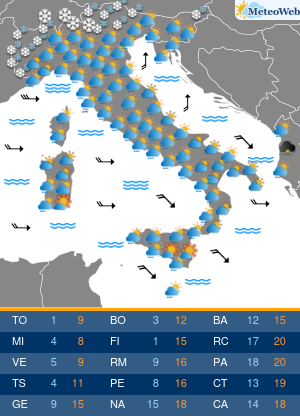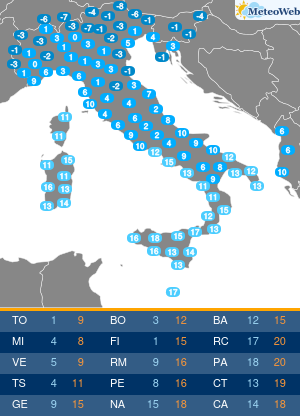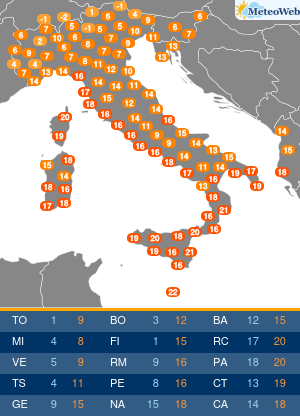Dopo il terremoto di Colfiorito del 1997 è stato attivato un monitoraggio in tempo reale degli eventi sismici che hanno luogo nella nostra penisola, per definire statisticamente la prevedibilità a medio termine spazio-temporale dei terremoti più forti. L’analisi considera una scala temporale dell’ordine di qualche mese o anno, ed aree con dimensioni di poche centinaia di chilometri. Lo studio è iniziato col fondamentale contributo della Dott.ssa Antonella Peresan dell’Istituto Nazionale di Oceanografia e di Geofisica Sperimentale, in collaborazione col Prof. Vladimir Kossobokov, dell’Institute of Earthquake Prediction Theory and Mathematical Geophysics della Russian Academy of Sciences, Istituto fondato dall’Accademico Prof. Vladimir Keilis-Borok.
A partire dal 2015, su invito del Prof. Panza, il Prof. Mattia Crespi, della università La Sapienza di Roma, partecipa attivamente al progetto e cura gli aspetti geodetici connessi con le osservazioni fornite dal sistema satellitare globale di navigazione (in lingua inglese global navigation satellite system, acronimo GNSS). L’approccio interdisciplinare ha permesso lo sviluppo di uno strumento preventivo, che sposa la geodesia e la sismologia, da impiegarsi nella gestione della pericolosità sismica e pianificazione antisismica.
Ne abbiamo parlato con il Prof. Giuliano Panza.
Quali risultati forniscono il monitoraggio sismologico e geodetico a scala intermedia del territorio?

Utilizzando il metodo neodeterministico (NDSHA) per la definizione della pericolosità sismica ed il metodo di previsione dei terremoti a medio termine spazio temporale (CN), nati e sviluppati a livello internazionale esclusivamente in ambito sismologico, per l’Italia è stato possibile delineare una ripartizione in quattro zone del territorio nazionale ed aree limitrofe: zona nord, centro (grosso modo coincidente con l’Appenino), sud e la placca Adria (https://www.meteoweb.eu/2018/12/prevedere-i-terremoti-3/1187675/; https://www.meteoweb.eu/2020/01/prometeo-prevedere-terremoti-possibile-azioni-prevenzione-panza-spiega-come/1380162/; http://www.mitp.ru/en/cn/CN-Italy.html).
Le zone, grazie alle indagini sismologiche e tettoniche condotte negli anni ’90, sono state identificate sulla base della loro omogeneità/affinità dal punto di vista sismotettonico e geodinamico, e possono essere considerate degli “unicum” nell’analisi dell’evoluzione della sismicità. E’ quindi naturale formulare una previsione “omogenea” all’interno della medesima zona, senza differenziare la probabilità fra le diverse aree al suo interno. Questa informazione gestita macroscopicamente, a livello di zona unitaria, è non solo di grande importanza scientifica ma possiede un preciso valore pratico, anche se di non facile utilizzazione operativa.
L’obiettivo dello studio condotto è stato quindi quello di individuare, integrando i dati geodetici con quelli sismologici, aree più limitate maggiormente esposte all’occorrenza di un evento sismico forte.
Dopo la sequenza sismica che ha interessato il Centro Italia dal 2016 al 2017, abbiamo pensato di utilizzare l’informazione geodetica puntuale, ovvero le serie storiche di posizioni giornaliere fornite continuativamente da stazioni permanenti GNSS, che permettono di stimare le loro velocità geodinamiche. Sul territorio nazionale, le stazioni permanenti GNSS analizzate con continuità sono circa un migliaio, ma purtroppo non sono distribuite uniformemente, con distanze medie non minori di 20 km ma assai variabili; è quindi difficile ricostruire localmente, in modo affidabile, il potenziale movimento, puntuale o meno, di una faglia e da questo segue la impossibilità pratica di quantificare l’energia elastica che può sprigionarsi e dare luogo ad un terremoto. Il problema non riguarda solo l’Italia ma anche altre nazioni caratterizzate da elevata sismicità, quali ad esempio il Giappone, che pur annovera una densità di stazioni più elevata di quella italiana.
La sismologia indica che in una zona sismologicamente omogenea, molto estesa, si potrà scatenare un evento rilevante quando la zona è allertata. È doveroso ricordare che un’allerta ha durata variabile da alcuni mesi fino a oltre un anno; ad esempio, nel caso infausto del terremoto in Emilia-Romagna (2012) l’allerta fu identificata a partire da marzo 2012, poco più di due mesi prima, e ne fu data comunicazione alla Commissione Grandi Rischi in data 4 maggio 2012 (https://www.vglobale.it/wp-content/uploads/2017/07/ACL310-Estratto.pdf). E’ opportuno sottolineare che le informazioni previsionali fornite dalla sismologia, sono naturalmente caratterizzate da un’incertezza spazio-temporale elevata, ma risultano statisticamente significative: la probabilità di ottenere risultati analoghi dichiarando l’allerta in modo casuale è inferiore all’1%.
La zona eventualmente allertata è molto ampia, l’informazione che si vuole migliorare è quindi la localizzazione del maggiore rilascio di energia che darà luogo al terremoto, in altre parole dell’area più prona a essere soggetta al fenomeno sismico.
La geodesia permette di circoscrivere quest’area sulla base delle cosiddette “anomalie geodetiche”, che possono essere individuate proprio analizzando le velocità geodinamiche fornite dalle stazioni permanenti GNSS.
Il caso pilota del terremoto in Centro Italia: Come vengono riscontrate le anomalie geodetiche ed in cosa consistono?
Le eventuali anomalie geodetiche sono definite innanzitutto sulla base di considerazioni sismotettoniche, che permettono di definire direzioni preferenziali ortogonali ai principali sistemi di faglie potenzialmente sismogenetiche. Nel caso dell’Appennino Centrale, la direzione preferenziale è sostanzialmente ortogonale alla catena appenninica. Lungo queste direzioni vengono quindi individuate delle fasce (cosiddetti “transetti”) larghe circa 50 km, all’interno della quali è ragionevole considerare che il comportamento geodinamico sia omogeneo in direzione ortogonale alla direzione preferenziale.
Tutte le velocità geodinamiche delle stazioni permanenti GNSS contenute in ogni transetto vengono quindi proiettate nella direzione del transetto. Le anomalie geodetiche sono definite da eventuali variazioni significative delle velocità rispetto ad un andamento lineare lungo il transetto e rispetto agli eventuali transetti adiacenti. Ad esempio, nel caso dell’Appennino Centrale, l’osservazione delle singolarità è emersa con notevole chiarezza in corrispondenza del transetto contenente Amatrice: nell’area di Amatrice si è, infatti, riscontrato un andamento delle velocità geodinamiche completamente differente, caratterizzato da un fenomeno di dilatazione particolarmente accentuato, sia rispetto ad altre zone dello stesso transetto sia rispetto ai transetti adiacenti.
Quali sono gli obiettivi futuri di questo strumento di prevenzione?
Lo studio, sviluppato in modalità retroattiva, è stato applicato alla sequenza sismica del Centro Italia (2016 – 2017) e al terremoto dell’Emilia-Romagna (2012). Visti i risultati conseguiti, l’obiettivo è ora quello di estenderlo (in modalità predittiva) all’intera penisola italiana.
Si vuole quindi completare e rendere operativo in modo sistematico lo strumento preventivo che abbina all’allerta diagnosticata con cadenza bimestrale dal CN, per il verificarsi di un possibile evento sismico avente magnitudo superiore a 5.4 (zona nord e Adria) o a 5.6 (centro e sud), le osservazioni della geodesia, individuandone le anomalie, che, a loro volta, saranno in grado di circoscrivere un’area molto più limitata (poche migliaia di km2) più prona di altre della zona allarmata ad essere soggetta a un terremoto. Uno studio in corso, in collaborazione con la China Earthquake Administration ha per obiettivo anche l’applicazione di questa metodologia al progetto China Seismic Experimental Site – Natural laboratory of earthquake science for seismic disaster resilience (http://www.ief.ac.cn/home/index.html, http://www.ief.ac.cn/ylaw/info/2020/22510.html, http://www.ief.ac.cn/ylaw/info/2020/22512.html , http://www.ief.ac.cn/eic/info/2020/22511.html).
Per approfondimenti: Esiste da molti anni un approccio alla determinazione della pericolosità sismica che è correttamente fondato sulla geofisica e sulle informazioni disponibili: si tratta dell’approccio neo-deterministico. Questo libro spiega con parole comprensibili cosa sia e come funzioni il metodo neo-deterministico, illustrando anche le ragioni per le quali la mirabolante precisione dei dati forniti dalle vigenti normative è fuori scala. Il libro è utile per ingegneri, geologi, professionisti delle costruzioni e per i responsabili del patrimonio pubblico.
FROM THE ALLIANCE BETWEEN SEISMOLOGY AND GEODESY: WHERE AND WHEN STRONG EARTHQUAKES – Interview with Prof. Giuliano Panza, from the Accademia Nazionale dei Lincei
After the Colfiorito earthquake of 1997, real-time monitoring of the seismic events taking place in our peninsula was activated, to statistically define the medium-term predictability of the strongest earthquakes in the medium term. The analysis considers a time scale of the order of a few months or years, and areas with dimensions of a few hundred kilometers. The study started with the fundamental contribution of Dr. Antonella Peresan of the National Institute of Oceanography and Applied Geophysics, in collaboration with Prof. Vladimir Kossobokov, of the Institute of Earthquake Prediction Theory and Mathematical Geophysics of the Russian Academy of Sciences, Institute founded by Academician Prof. Vladimir Keilis-Borok.
Starting from 2015, at the invitation of Prof. Panza, Prof. Mattia Crespi, from the La Sapienza University of Rome, actively participates in the project and takes care of the geodetic aspects connected with the observations provided by the Global Satellite Navigation System (GNSS). The interdisciplinary approach has allowed the development of a preventive tool, which combines geodesy and seismology, to be used in the management of seismic hazard and seismic planning.
We talked about it with Prof. Giuliano Panza.
What results do seismological and geodetic monitoring on an intermediate scale of the territory provide?
Using the neodeterministic method (NDSHA) for the definition of seismic hazard and the method of medium-range intermediate-term forecasting of earthquakes (CN), born and developed internationally exclusively in the seismological field, it was possible to outline, on a national scale, a division into four areas of the Italian territory and neighboring zones: north area, center (roughly coinciding with the Apennines), south and the Adria plate (https://www.meteoweb.eu/2018/12/prevedere-i-terremoti-3/1187675/; https://www.meteoweb.eu/2020/01/prometeo-prevedere-terremoti-possibile-azioni-prevenzione-panza-spiega-come/1380162/; http://www.mitp.ru/en/cn/CN-Italy.html).
These areas, thanks to seismological and tectonic investigations conducted in the 1990s, have been identified on the basis of their homogeneity/affinity from a seismotectonic and geodynamic point of view, and can be considered “unicum” in the analysis of the evolution of seismicity. This allows us to formulate a “homogeneous” forecast within the same area, without therefore differentiating the probability between the different areas within it. This macroscopically managed information, at the unitary area level, certainly has not only scientific importance but also a practical implication, even if it is not easy to apply operationally.
The aim of the study was therefore to investigate whether, within the same homogeneous area, there was the possibility of identifying more limited areas prone to a seismic event, integrating the geodetic data with the seismological ones.
After the seismic sequence occurred in Central Italy in 2016 and 2017, we decided to use the punctual geodetic information, i.e. the historical series of daily positions continuously provided by the permanent GNSS stations, which allow us to estimate their geodynamic velocities. On the national territory, the permanent GNSS stations continuously analyzed are about a thousand, but unfortunately they are not uniformly distributed, with average distances of not less than 20 km, but quite variable. It is therefore difficult to reconstruct, locally and reliably, the potential movement, of a fault. From this it follows the practical impossibility of quantifying the elastic energy that can be released and give rise to an earthquake. This is not only an Italian problem, but also affecting other nations located in areas with high seismicity, such as Japan, which has a higher density of stations than the Italian one.
Seismology indicates that in a seismologically homogeneous, very large area, a strong event may be triggered when the area is alerted. It should be remembered that an alert lasts from several months to over a year; for example, in the deadly case of the earthquake in Emilia-Romagna (2012) the alert start in March 2012, just over two months earlier, and it was communicated to the Major Risks Commission on 4 May 2012 (https://www.vglobale.it/wp-content/uploads/2017/07/ACL310-Estratto.pdf). It should be noted that the forecast information provided by seismology is naturally characterized by large spatio-temporal uncertainty, but is statistically significant: the probability of obtaining similar results by declaring the alert randomly is less than 1%.
Since the possibly alerted area is very large, the information that we want to improve is the location of the greater release of energy that will give rise to the earthquake, in other words of the area most prone to the seismic phenomenon.
Geodesy allows us to limit this area on the basis of the so-called “geodetic anomalies”, which can be identified quite precisely by analyzing the geodynamic velocities provided by the permanent GNSS stations.
The pilot case of the earthquake in Central Italy: How are geodetic anomalies found and what do they consist of?
Any geodetic anomaly is located first by identifying, on the basis of seismotectonic considerations, preferential directions orthogonal to the main potentially seismogenic fault systems. For example, in the case of the Central Apennines, the preferential direction is substantially orthogonal to the Apennine chain. Along these directions are identified bands (so-called “transects”) about 50 km wide, within which it is reasonable to believe that the geodynamic behavior is homogeneous, in the direction orthogonal to the preferential direction.
All the geodynamic velocities of the permanent GSNN stations contained in each transect are projected on the preferential direction of the transect. Any significant variation in velocity with respect to a linear trend along the transect and with respect to any adjacent transect constitutes the geodetic anomaly. For example, in the case of the Central Apennines, the observation of singularities emerged with considerable clarity with respect to the Amatrice transect: in the area of Amatrice a completely different geodynamic velocity trend was observed, characterized by a particularly marked expansion phenomenon, both with respect to other parts of the same transect and to the adjacent transects.
What are the future objectives of this prevention tool?
The study, developed retroactively, was applied to the seismic sequence of Central Italy (2016 – 2017) and to the Emilia-Romagna earthquake (2012). Given the results achieved, the goal is now to extend it, in a predictive way, to the entire Italian peninsula.
We therefore want to complete and make operational the preventive tool that combines (a) the alert for the occurrence of a possible seismic event, having a magnitude greater than 5.4 (north and Adria area) or 5.6 (center and south ), diagnosed every two months by CN, with (b) the geodesy observations, identifying the anomalies, which, in turn, will be able to circumscribe a much more limited area (a few thousand km2) more prone than others in the alarmed area to a strong earthquake. An ongoing study, in collaboration with the China Earthquake Administration, aims to apply this methodology to the China Seismic Experimental Site – Natural laboratory of earthquake science for seismic disaster resilience project ((http://www.cses.ac.cn/en/; http://www.cses.ac.cn/en/?p=98; http://www.cses.ac.cn/en/?p=108; http://www.cses.ac.cn/en/?p=515).
For further information: For many years there has been an approach to the determination of seismic hazard which is correctly based on geophysics and available information: this is the neo-deterministic approach. This book explains in understandable words what the neo-deterministic method is and how it works, also illustrating the reasons why the amazing precision of the data provided by current regulations is out of scale. The book is useful for engineers, geologists, construction professionals and managers of public assets. The book is in english but contains a wealthy list of english references.











